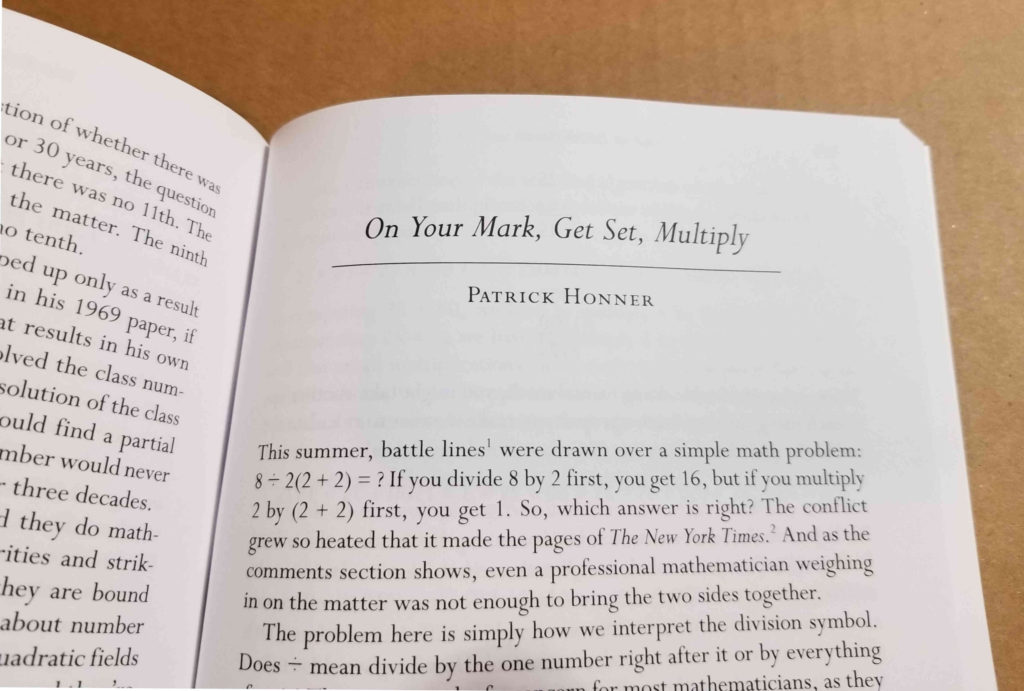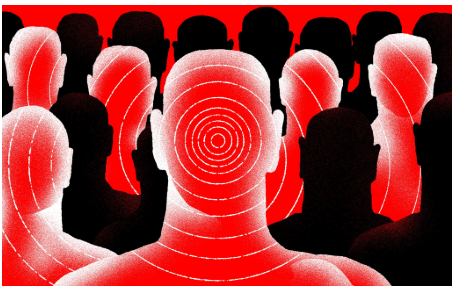At the risk of making the understatement of the decade, it has been a challenging year. But 2021 offers promise along multiple dimensions. So with a hopeful eye toward the near future, here’s a review of very busy professional year.
Everything about teaching changed in the past 9 months. In March, COVID-19 sent New York City into Emergency Remote Learning. In September, we returned to schools still adapting to the pandemic. Writing about both experiences has been helpful for me: First, my unprepared reaction to going all remote in the Spring, and later, my adjustment to becoming a fully-remote live teacher in the Fall. It’s all made my second year at a new school seem like Year Five. But we are getting through it.
The biggest professional honor of the year for me came with the publication of “The Best Writing on Mathematics 2020” from Princeton University Press. It’s still a bit shocking to see my article “On Your Mark, Get Set, Multiply” featured alongside the work of incredible mathematical communicators like Steven Strogatz, Erica Klarreich, John Carlos Baez, and others.
The article was originally published in Quanta Magazine, and I explored many fun topics in my column this year, like how social distancing is a geometry problem, the power of assigning impossible problems in math class, and how we still can’t answer simple-sounding questions like “What’s the biggest shape of diameter one?“.
I also continued to write for the New York Times Learning Network in 2020, publishing “Dangerous Numbers” and “7 Ways to Explore the Math of the Coronavirus with the New York Times“. As a result of those pieces, I was interviewed for an NPR piece about teaching about the coronavirus (and received a surprising message from an old friend because of it!)
For obvious reasons, 2020 was the year of the webinar, and I gave talks, ran workshops, and participated in a variety of virtual panels this past year. This summer I participated in NCTM’s 100 Days of Professional Learning with “Coding Math at a Distance“, and ran “A Crash Course in Geogebra” through Math for America to help teachers prepare to teach geometry remotely. This fall I was invited to contribute to NCTM‘s first-ever Virtual Conference, spoke about computer science education at a PAEMST Alumni Webinar, talked Stats in the STEM Classroom as part of joint program between the Museum of Mathematics and Brookhaven National Laboratory, and participated in a panel discussion on math and media literacy during Media Literacy Week. And even though it feels like we’ve been quarantining for years, I actually travelled to Rutgers in February to give my talk “Math Outside the Bubble” in person.
I continued to review books and manuscripts for various publishers, and read a good deal in 2020 as well. I also stayed connected to the mathematical art community, working with organizations like Bridges Math and Art and the Journal for Mathematics and the Arts. I even had some of my photography on display in a exhibit alongside some of my favorite mathematical artists.
I also took advantage of some down time this summer to redesign my personal web page, PatrickHonner.com, and I updated my Speaking and Writing pages. As usual, the new year is already filling up with new and interesting opportunities, but I’m always open to inquiries and can be contacted here.
It was a full and fulfilling professional year, but like much of the world I’ll be glad to put 2020 behind us. Here’s wishing our optimism for 2021 is justified.
Related Posts




